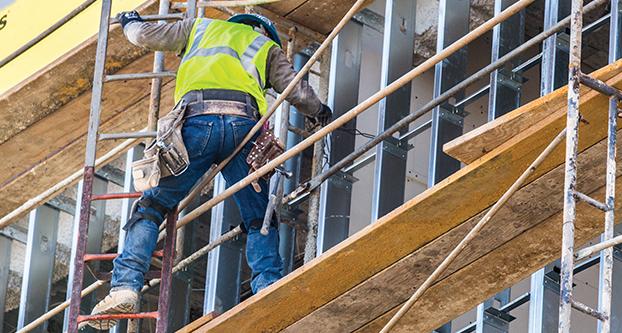The new Jordan Agricultural Research Center is nearing completion, and professors in a number of disciplines are excited about the benefits it will provide for Fresno State and the local community.
Sandra Witte, interim dean of the Jordan College of Agricultural Sciences and Technology, said even though the construction of the building has been delayed by a couple weeks to a month, the research center is on budget and will still be ready to go by spring 2016.
The main components of the building that are still in progress include the walls, windows and flooring.
“They told us that once they got the steel structure in that we would see a lot of progress quite quickly,” Witte said. “It still has a long ways to go, but it is just a very time-consuming process to have a building of this magnitude built.”
The building, which broke ground in June 2014, has three floors, all of which are designated for different research purposes.
The first floor, also called the public floor, is a place where students, faculty, staff and the community can interact, network and hold group study sessions. Also on the first floor is a sensory evaluation tasting preparation area, where citizens in the community can go and be taste panel participants.
The preparation area also serves as a lab that will be set up specifically to carry out research level evaluation of foods.
Right across from the preparation area is a water-modeling lab that will be used for research on the drought and other critical needs in California.
The second and third floors are equipped with traditional labs, or wet labs, with different types of water such as deionized and distilled water.
“There are gases that are used in chemistry-related or biology-related experimentation, and so these labs are set up to do more traditional kinds of scientific research,” Witte said.
The third floor looks much like the second floor and is equipped with lab equipment, but the former is much more focused on things that are of concern in agriculture.
Other areas in the research center haven’t yet been identified for a specific purpose and will remain vacant until a need arises.
The idea of the building is to encourage collaboration among disciplines such as agriculture, engineering, science and mathematics, among others.
Missing from the building are classrooms mainly because the research center is dedicated to research alone.
The limited office space is another noticeable, nontraditional element in the research center.
“There are no faculty offices planned, and the idea is that you do your research here but you continue to do your teaching and you have your office on the main campus,” Witte said.
Mechel S. Paggi, the director of the Center for Agricultural Business, said he is excited about the new research center and believes it is a major step forward not only for the Jordan College but for the university as a whole.
“I have been here 14 years, and this is a major step in the right direction for me,” Paggi said. “The fact that we were able to get outside funding to support research and support agriculture I think is tremendously exciting.”
Paggi also believes the research center will create opportunities for both graduate and undergraduate students to gain world-class research experience.
“I just think it provides the foundation for growth in everything we do,” Paggi said. “I am a firm believer that research is the foundation by which we get better in everything we do. Faculty engaged in cutting-edge research at a brand-new facility trickles down into better educational opportunities for their students.”
Shannon Fast, the associate director of development for the Jordan College, feels the research center will help address and solve the world’s problems and issues regarding food supply and the use of our natural resources.
“We need research and technology development in order to be able to address these issues and to come up with practical solutions to feed the world,” Fast said.
Fast also added the research center will help prepare students to find the solutions needed to better the community and those throughout the nation.
“This has been a long time in planning, and it is incredibly exciting to see it taking shape on campus now,” Fast said. “This is a place where our students can be a part of the solution where they can develop new ideas and be a part of a really great thing and feeding the world.”




